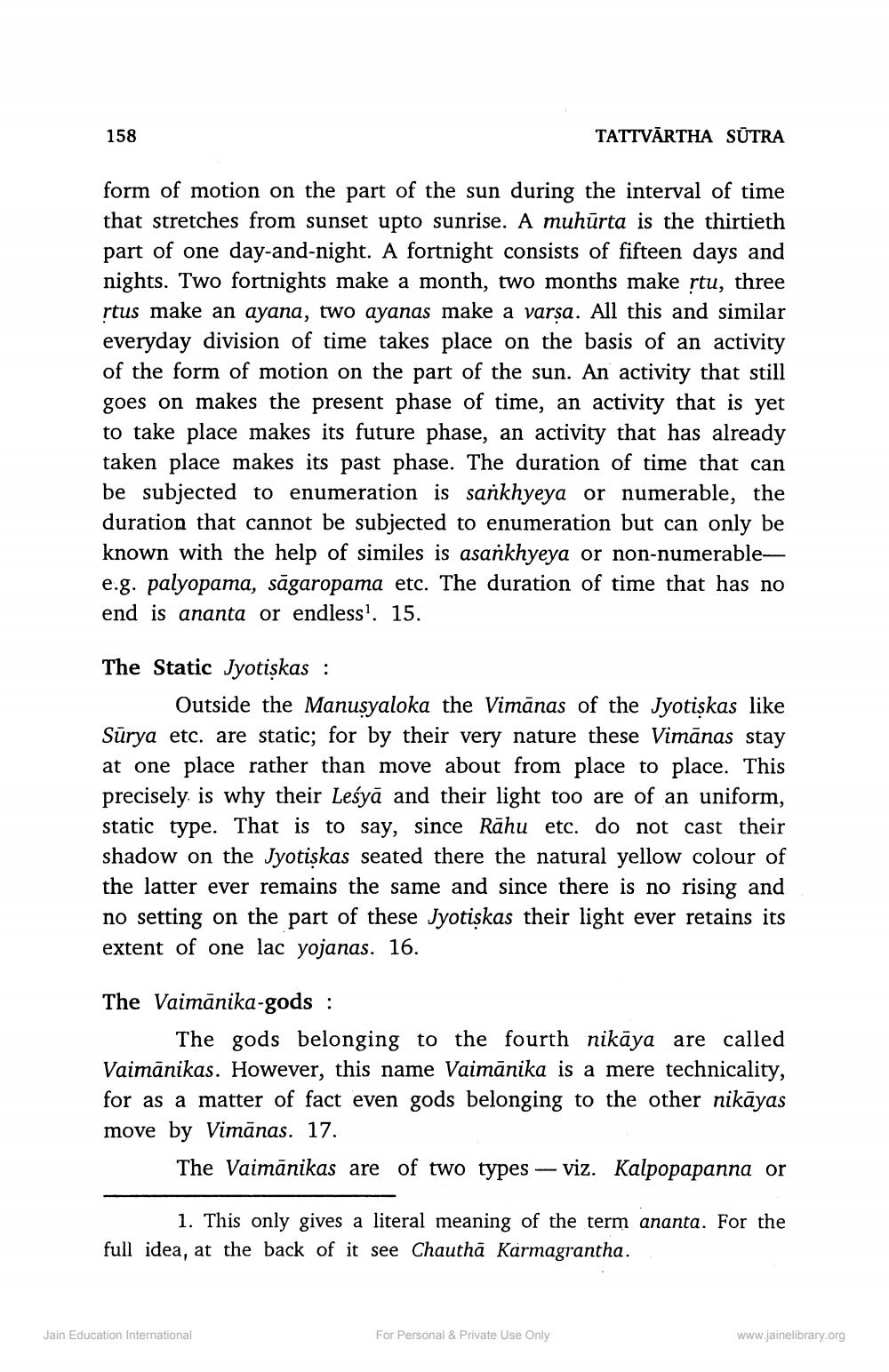________________
158
TATTVĀRTHA SŪTRA
form of motion on the part of the sun during the interval of time that stretches from sunset upto sunrise. A muhūrta is the thirtieth part of one day-and-night. A fortnight consists of fifteen days and nights. Two fortnights make a month, two months make rtu, three rtus make an ayana, two ayanas make a varsa. All this and similar everyday division of time takes place on the basis of an activity of the form of motion on the part of the sun. An activity that still goes on makes the present phase of time, an activity that is yet to take place makes its future phase, an activity that has alread taken place makes its past phase. The duration of time that can be subjected to enumeration is sankhyeya or numerable, the duration that cannot be subjected to enumeration but can only be known with the help of similes is asankhyeya or non-numerablee.g. palyopama, sāgaropama etc. The duration of time that has no end is ananta or endless!. 15.
The Static Jyotiskas :
Outside the Manusyaloka the Vimānas of the Jyotiskas like Sūrya etc. are static; for by their very nature these Vimānas stay at one place rather than move about from place to place. This precisely is why their Leśyā and their light too are of an uniform, static type. That is to say, since Rāhu etc. do not cast their shadow on the Jyotiskas seated there the natural yellow colour of the latter ever remains the same and since there is no rising and no setting on the part of these Jyotiskas their light ever retains its extent of one lac yojanas. 16.
The Vaimānika-gods :
The gods belonging to the fourth nikāya are called Vaimānikas. However, this name Vaimānika is a mere technicality, for as a matter of fact even gods belonging to the other nikāyas move by Vimānas. 17.
The Vaimānikas are of two types – viz. Kalpopapanna or
1. This only gives a literal meaning of the term ananta. For the full idea, at the back of it see Chauthā Karmagrantha.
Jain Education International
For Personal & Private Use Only
www.jainelibrary.org




